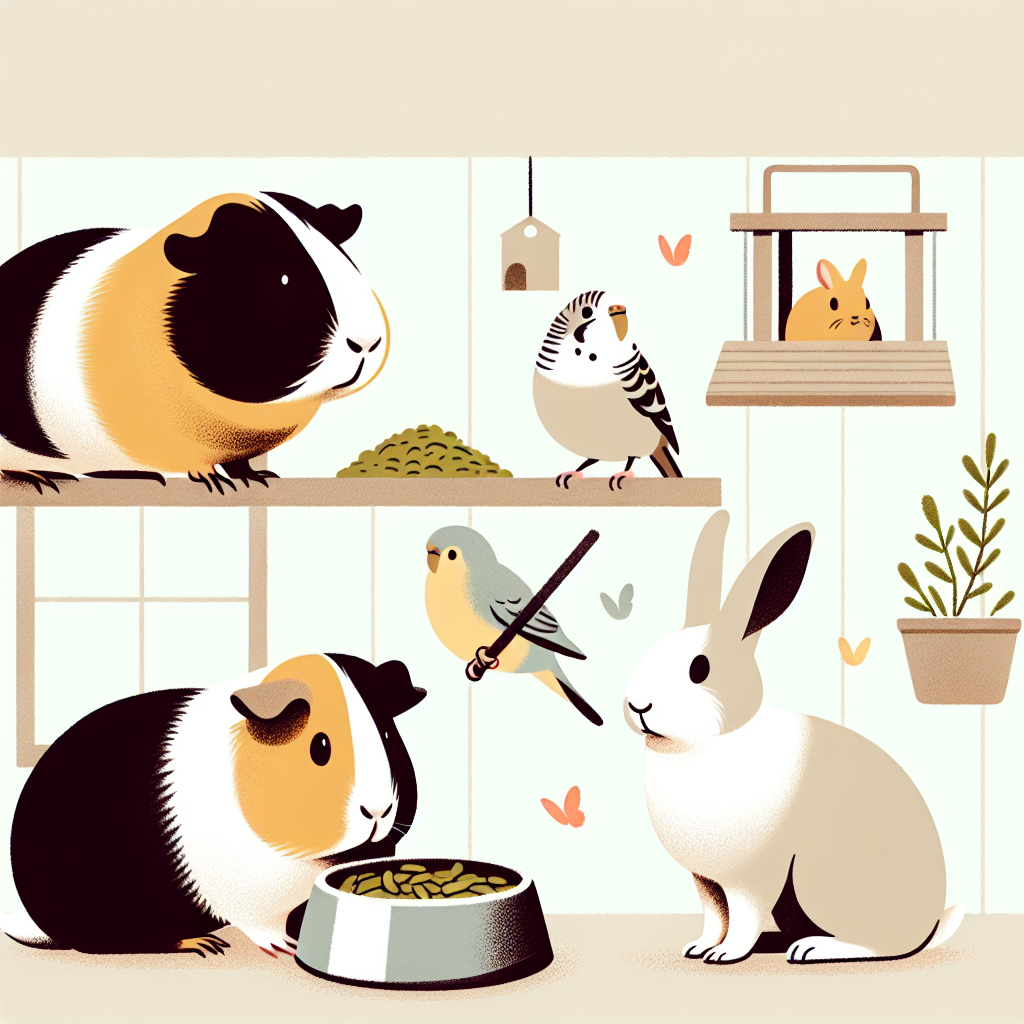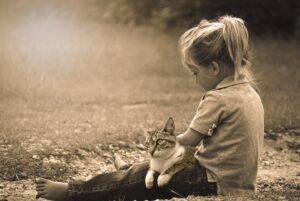
Introduction
Small pets, such as hamsters, guinea pigs, rabbits, and birds, have become popular companions for many households. Their manageable size, captivating behaviors, and diverse species make them appealing to a wide range of pet lovers. However, understanding the behavior of these small animals is crucial for ensuring their well-being and happiness. This article delves into the key behavioral cues of small pets, providing insights into how they communicate, their needs, and how to create an enriching environment for them.
Reading Body Language
Unlike larger pets such as dogs and cats, small animals communicate primarily through body language. Understanding these non-verbal cues can help pet owners respond appropriately to their needs and emotions.
Rabbits
Rabbits are expressive animals that use their entire body to communicate. A relaxed rabbit often lies down with its legs stretched out behind or to the side, indicating contentment. Conversely, a rabbit sitting upright with ears perked up is likely on high alert. Thumping, where a rabbit forcefully strikes the ground with its hind legs, signals distress or warning. Understanding these cues helps prevent stress and fosters a trusting relationship.
Guinea Pigs
Guinea pigs are social creatures that exhibit a range of behaviors. Popcorning, characterized by energetic jumps and twists, indicates excitement or happiness. Purring, similar to cats, signifies contentment, although a higher-pitched purr may indicate annoyance. When frightened, guinea pigs may freeze or run for cover. Recognizing these signs allows owners to create a comforting environment for their pets.
Hamsters
Hamsters are solitary animals, and understanding their behavior is crucial for their well-being. A hamster standing on its hind legs with its front paws raised is likely curious or assessing its environment. Teeth chattering, however, is a sign of agitation or fear. Additionally, grooming is a normal behavior that indicates relaxation, but excessive grooming may point to stress.
Birds
Birds communicate through vocalizations and body language. A bird that fluffs its feathers or stretches its wings is often comfortable and relaxed. Tail bobbing can indicate excitement, while rapid tail movements may suggest stress. Understanding these cues helps bird owners ensure their feathered friends are content and healthy.
Vocalizations and Sounds
While small pets primarily communicate through body language, vocalizations also play a significant role in their interactions. Each species has a unique set of sounds that convey specific emotions and needs.
Rabbits
Rabbits are generally quiet animals, but they do make sounds to express themselves. A soft purring or humming noise is a sign of happiness, often heard when being petted. Grunting or growling indicates displeasure or aggression. A high-pitched scream is rare but signals severe distress or pain and requires immediate attention.
Guinea Pigs
Guinea pigs are vocal and use a variety of sounds to communicate. Wheeking, a high-pitched squeal, is commonly heard when they anticipate food or attention. Chirping is less understood but may indicate contentment or curiosity. Teeth chattering often suggests annoyance or fear, signaling the need to assess their environment for stressors.
Hamsters
Hamsters are generally quiet, but they can produce sounds when necessary. Squeaking may indicate fear or discomfort, while grinding teeth is a sign of stress. Paying attention to these sounds helps owners provide appropriate care and minimize stressors.
Birds
Birds are known for their vocal abilities, and each species has distinct sounds. Chirping and singing are signs of happiness and contentment. Loud screeching or squawking, however, may indicate stress or a need for attention. Understanding these vocalizations helps in maintaining a harmonious environment for pet birds.
Social Interactions
The social nature of small pets varies widely between species. Understanding their social needs is crucial for their overall well-being.
Rabbits
Rabbits are social animals that thrive in pairs or groups. They form strong bonds and engage in mutual grooming and play. Isolated rabbits may become lonely or depressed, highlighting the importance of companionship. Introducing rabbits to each other requires careful supervision to ensure compatibility.
Guinea Pigs
Guinea pigs are highly social and should be kept in pairs or small groups. They communicate through vocalizations and body language, forming complex social structures. Solitary guinea pigs may exhibit signs of loneliness, such as decreased activity or appetite. Providing social interaction is essential for their happiness.
Hamsters
Unlike rabbits and guinea pigs, hamsters are solitary creatures. Housing them together can lead to aggressive behavior and stress. Each hamster should have its own space to ensure a peaceful environment. Understanding their solitary nature allows owners to provide the appropriate care.
Birds
Birds are social creatures that benefit from interaction with other birds or humans. Many species, such as parrots, require significant social interaction to prevent boredom and behavioral issues. Providing toys, socialization, and mental stimulation is key to their happiness.
Creating an Enriching Environment
An enriching environment is essential for the well-being of small pets. Understanding their behavior helps in designing a habitat that caters to their needs and promotes natural behaviors.
Rabbits
Rabbits need ample space to hop and explore. Providing tunnels, hiding spots, and chew toys encourages natural behaviors and prevents boredom. A safe outdoor space for supervised playtime can also enhance their quality of life.
Guinea Pigs
Guinea pigs require a spacious enclosure with hiding spots and tunnels to explore. Providing fresh vegetables and hay encourages foraging behavior. Regular social interaction and playtime outside their enclosure are crucial for their mental and physical health.
Hamsters
Hamsters need a habitat with tunnels and wheels to satisfy their natural instincts for burrowing and running. Providing nesting materials and hiding spots promotes a sense of security. Regular handling and playtime help them stay active and engaged.
Birds
Birds require a stimulating environment with perches, toys, and opportunities for flight. Foraging toys and puzzles encourage mental engagement. Regular interaction and time outside the cage are essential for their well-being.
Conclusion
Understanding the behavior of small pets is a cornerstone of responsible pet ownership. By paying attention to their body language, vocalizations, and social needs, pet owners can create a nurturing environment that promotes the health and happiness of their small companions. Whether it’s a rabbit, guinea pig, hamster, or bird, each species has unique cues and requirements that, when understood and respected, lead to a fulfilling and mutually rewarding relationship.
#ChatGPT assisted in the creation of this article.








